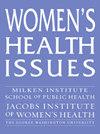整合付费隔离门诊妇产科护理模式:临床医生的观点。
IF 2.5
2区 医学
Q2 PUBLIC, ENVIRONMENTAL & OCCUPATIONAL HEALTH
引用次数: 0
摘要
目的:在美国,孕产妇保健和妇科结果存在显著的和不可接受的种族差异,门诊护理是一个潜在的因素。在许多学术医疗中心(amc),公共保险和没有保险的病人在主要由住院医生监督的居民组成的诊所接受治疗,而那些有私人保险的人在不同的地点看主治医生。这种付款人的隔离可以转化为事实上的种族隔离。本研究探讨了临床医生对主要AMC中住院医师和主治医师对付费隔离式医疗服务的看法,以及他们对整合这些站点的看法。方法:我们对两家医院的主治医生和高级执业医师(app)进行了半结构化访谈。访谈指南的重点是:1)当前护理模式的感知价值,2)对护理整合的态度,以及3)整合的障碍和促进因素。采访从2022年10月到2023年1月进行,直到主题饱和。数据分析采用基于理论的综合方法,20%的转录本双编码(k = 0.90)。结果:我们采访了15名临床医生(10名主治医师,5名app)。尽管临床医生认识到现有隔离制度的一些价值,但他们支持结束这种制度,认为这是打击不平等的道德要求。他们还强调了挑战,并对一体化的可行性表示关切。人们担心的问题包括保持病人和临床医生的连续性,私人保险患者接受培训生,使命驱动型护理的潜在侵蚀,以及如果脆弱社区的安全空间被破坏,种族主义互动的风险。临床医生强调在全面整合之前需要资源和小规模试验。结论:尽管临床医生对整合门诊护理交付的概念表示一致,但实施另一种护理模式的途径仍不清楚。这项研究提供了初步的见解,在门诊妇产科护理差距,并可能指导卫生系统考虑护理整合。本文章由计算机程序翻译,如有差异,请以英文原文为准。
Integrating Payor-Segregated Outpatient OBGYN Care Models: The Clinician Perspective
Purpose
Significant and unacceptable racial disparities in maternal health and gynecologic outcomes exist in the United States, with ambulatory care being a potential contributor. In many academic medical centers (AMCs), publicly insured and uninsured patients receive care in clinics staffed primarily by residents under attending supervision, whereas those with private insurance see attending physicians at a different site. This segregation by payor can translate to de facto racial segregation. This study explores clinician perspectives on payor-segregated care delivery by resident and attending sites in a major AMC and their opinions on integrating these sites.
Methods
We conducted semi-structured interviews with attending physicians and advanced practice providers (APPs) from both sites. The interview guide focused on: 1) perceived value of the current care model, 2) attitudes toward care integration, and 3) barriers and facilitators to integration. Interviews were conducted from October 2022 to January 2023 until thematic saturation was achieved. Data analysis involved an integrated approach with grounded theory, with 20% of transcripts double-coded (k = .90).
Results
We interviewed 15 clinicians (10 attendings, five APPs). Although clinicians recognized some value in the existing segregated system, they supported ending it as a moral imperative to combat inequity. They also highlighted challenges and expressed concerns about feasibility of integration. Concerns encompassed maintaining patient-clinician continuity, acceptance of trainees by privately insured patients, potential erosion of mission-driven care, and the risk of racist interactions if a safe space for a vulnerable community is disrupted. Clinicians stressed the need for resources and small-scale trials before full-scale integration.
Conclusion
Although clinicians expressed unity around the concept of integrating ambulatory care delivery, a path toward implementing an alternative model of care remains unclear. This study provides initial insights into disparities in ambulatory OBGYN care and may guide health systems considering care integration.
求助全文
通过发布文献求助,成功后即可免费获取论文全文。
去求助
来源期刊

Womens Health Issues
Multiple-
CiteScore
4.50
自引率
6.20%
发文量
97
审稿时长
32 days
期刊介绍:
Women"s Health Issues (WHI) is a peer-reviewed, bimonthly, multidisciplinary journal that publishes research and review manuscripts related to women"s health care and policy. As the official journal of the Jacobs Institute of Women"s Health, it is dedicated to improving the health and health care of all women throughout the lifespan and in diverse communities. The journal seeks to inform health services researchers, health care and public health professionals, social scientists, policymakers, and others concerned with women"s health.
 求助内容:
求助内容: 应助结果提醒方式:
应助结果提醒方式:


